Turkish President Recep Tayyip Erdogan recently visited several African countries in order to strengthen relations across the continent. Turkey shares its historical experience, its social, political, and cultural accumulation as well as its possibilities and resources with African countries, standing firm by the principle of ‘African solutions for African matters’ on the basis of mutual benefit. Constructed on a historical foundation, Turkey’s Africa policy involves establishing political, humanitarian, economic and cultural relations on bilateral, regional, continental, and global levels. Enhancing our relations and cooperation with the African Continent constitutes one of the basic principles of our multidimensional foreign policy.
Turkish presence in Africa
The Tulunids dynasty of Turkic origin were the first independent dynasty to rule Egypt, as well as much of Syria. They remained independent from 868, when they broke away from the central authority of the Abbasid dynasty that ruled the Islamic Caliphate, until 905, when the Abbasids restored the Tulunid domains to their control. The Tulunid period was marked by economic and administrative reforms alongside cultural ones. Ahmad ibn Tulun changed the taxation system and aligned himself with the merchant community; he also established the Tulunid army. The capital was moved from Fustat to al-Qata’i, where the celebrated mosque of Ibn Tulun was constructed.i
After the Tulunid dynasty, the Mamluks established a state in Northern Africa. The Mamluks had formed a part of the state or military apparatus in Syria and Egypt since at least the 9th century, rising to become governing dynasties of Egypt and the Levant during the Tulunid and Ikhshidid periods. Mamluk regiments constituted the backbone of Egypt’s military under Ayyubid rule in the late 12th and early 13th centuries, beginning with Sultan Saladin who replaced the Fatimids’ African infantry with mamluks. While the Ottoman Sultan Bayezid II was engaged in Europe, a new round of conflict broke out between Egypt and the Safavid dynasty in Persia in 1501. Shah Ismail sent an envoy to Venice and Syria inviting them to join arms and recover the territory taken from them by the Ottoman Empire. The Mamluk sultan Qansuh Ghawri was warned by Ottoman sultan Selim I that Ghawri was providing the envoys of the Ismail I safe passage through Syria on their way to Venice and harbouring refugees. To appease him, Ghawri placed in confinement the Venetian merchants then in Syria and Egypt, but after a year, released them. The Mamluk Sultanate survived until 1517, when it was conquered by the Ottoman Empire. Ottoman sultan Selim I captured Cairo on January 20, the center of power transferred then to Istanbul. On January 25, the Mamluk Sultanate collapsed. Although not in the same form as under the Sultanate, the Ottoman Empire retained the Mamluks as an Egyptian ruling class and the Mamluks and the Burji family succeeded in regaining much of their influence but remained vassals of the Ottomans.ii
Ottomans in Africa
The real acquaintance of the Ottoman Empire with the African continent began with the conquest of Egypt in 1517. From this time to the First World War, the Ottoman State appears to have established political, economic, social, and cultural relations within the continent. After the 1517 conquest, the Ottomans were especially interested in the region because of the Hajj taking place between African states and Mecca. Having conquered the former Muslim Defenders of the Hajj, the Ottomans as the successors of those states in Africa, were charged with protecting and providing safe passage to all undertaking the Hajj. Portuguese hegemony around the Red Sea and Indian Ocean however, gave them some control over Hajjis. In 1528, the governor of Yemen, Sinan Pasha was sent to Mozambique to build a Turkish Mosque in Maputo. This was also one of the missions of the Caliphate, which used to be the head of Islam and this role was officially conducted by the Ottoman Sultans. As a result of the religious duties of the Ottoman Caliphate which are known to follow Pan-Islamist principles in the nineteenth century, the Ottoman Sultans sent Muslim scholars and emissaries to Islamic societies across the World such as Bukharian Sheikh Sulaiman to Russia, Shirvanizade Ahmet Hulusi to Afghanistan, Ferik Pasha to China, Emin Effendi to Zanzibar, and Abu Bakr Effendi al Quraysh al Amjady to South Africa. This was after the British Empire requested a spiritual scholar from the Ottoman Government (Sublime Porte) for the South African Muslims in 1861.iii
The Caliphate was seen as the head of Islam and this role was officially conducted by the Ottoman sultans. The sultans claimed themselves to be religiously shadows of caliph or servant of caliph as other Muslim Turkish States in history. However, since the sixteenth century, the Caliphate was officially operated by the Ottoman sultans and recognized as such by the Muslim World.xi
Ottoman sultans became more interested in the Islamic World with the treaty of Kuchuk Kainarj in 1774. For the first time, the Ottoman State used the Caliphate title in this treaty and declared itself as a protector state of Muslims.xii Moreover this influence went beyond the frontiers of the Ottoman State to wherever Muslims were present. Consequently, there was an extraordinary respect for the sultans of the Ottoman outside of the geographical boundaries of the Ottoman territory, which can be called mental boundaries of the State.xiii
Mardin notes that:
Sultan Abdul Hamid also sent emissaries to other Islamic countries to encourage them to resist imperialism; he built the Hedjaz railway expressly to strengthen Islam, and he reintroduced courses in Islamic ethics to the educational system at a time when student opposition to such courses was spreading.xiv
As a result of the religious duties of the Caliphate which are known to follow Pan-Islamism principles in the nineteenth century, the Ottoman sultans sent scholars to the Islamic societies of the world such as Bukharin Sheik Suleyman to Russia, Sirvanizade Ahmet Hulusi to Afghanistan, Ferik Pasha to China, Emin Effendi to Zanzibar and in same vein, Abu Bakr Effendi to South Africa. For this reason, English government requested a spiritual scholar from the Sublime Porte for the South African Muslims.xv
Ottoman traces in Southern Africa
By 1838, Ottoman-South African relations were established for the commercial reasons such as importing Angora Goats via India from the Ottoman State to the Cape Colony.xvi This mercantile relationship developed also with tobacco import from Turkey.xvii However, officially Ottoman interest in the South African Muslim society began in the 1850’s. Especially after the Crimean war in 1852, the English-Ottoman relationship had affected Turkish-South African relations which developed increasingly during the second half of the nineteenth century. At the beginning of the relationship, an Ottoman Consul Attaché was sent to the Cape from London. On the 6th of September 1852, instead of the Consul Attaché, an official Consul began the work for the Ottoman State in South Africa. His name was William Greg, and he was the first official emissary in Cape Town for the Ottoman State.
Sir,
Having submitted my credentials from the Honorable the secretary of State for foreign Affairs to the Lieutenant Governor – His Honour has been pleased of my forwarding the same to you with a view of having as consul of the Ottoman Empire my appointment duly nullified in the Government Gazette.
I have the honor to be Sir your Servant
William Greigxviii
In 1852, the Muslim Community of Port Elizabeth wanted to build a mosque for their congregation.xix Due to financial problems, the mosque could not be completed for many years. Thereafter, the Muslim community requested financial help from the Caliphate. Sultan Abdul Majid Khan accepted this request and firstly sent them a letter as a protector of Muslims. These types of activities created considerable sympathy among the Muslims of South Africa in the nineteenth century. Sultan Abdulmejid had also awarded some of the local Muslims with a Medjidie gold star.xx Maximilien clearly illustrates the situation and stated that as far back as the year 1856, the condition of our Mohammedan population attracted the attention of the late Sultan of Turkey, Abdul Majid, who formed a very favourable opinion of them and during his reign he showed by every possible means that he was not indifferent to the welfare advancement of this class of people in South Africa. This patronage he practically carried out by several acts of condescension on behalf of the Malays, which were in the first instance promoted by the intercession of the Mr. de Roubaix, whose representation were thus graciously met and appreciated by the Sultan.xxi On the other hand, there was an old ritual among some Muslims, called Khalifa. This ritual originated in Indonesia and was a type of religious practice but totally against Islamic orthodoxy. Maximilien states that:xxii
This nocturnal nuisance grew into so riotous a form as to compel the interference of the authorities and one gentleman, De Roubaix, the acting as judge of police, whose experience of the Malay community was both extensive and useful, was called upon the act as “arbitrator” in the matter. Mr. Roubaix submitted the circumstances to the notice of the Turkish authorities, which led to the presentation to Mr. Roubaix by his imperial majesty, the late Abdul Mejid of a gold snuff box set in diamonds, in appreciation of such services. Nevertheless, the feasts, which the Khalifa involved, were highly amusing and as regards those of the conjurors, astonishing, not altogether unmingled with fear of accident.xxiii
This religious conflict was a great opportunity for Petrus Emanuel De Roubaix.xxiv So much so that he became a famous politician while he was still a clerk in Cape Town. Accordingly, some Ottoman Archival documents were issued by the Sultans regarding Petrus Emanuel de Roubaix and his actions.xxv When Petrus Emanuel De Roubaix was a clerk in Cape Parliament, he became a member of the Legislative Council. In many events, he showed his opportunistic mentality which he only exhibited in order to gain a better position in society. According to documents in the Cape Archive, he mediated regarding certain issues among the Muslims, he intended to enhance his reputation but without success. Coates notes that “Petrus Emanuel De Roubaix inflated his abilities, actions and self-importance to a laughable extent, yet he was always wily enough not to be put to the test or expose his ignorance.”xxvi During this time, Roubaix worked for Muslim affairs, though his activities were not to genuinely help the Muslims but rather to provide financial support as well as gain more important status within the parliament at the Cape.xxvii Davids states that:
De Roubaix was the Consul of the Sublime Porte at the Cape of Good Hope and on many occasions pleaded the plight of the Cape Muslims with the Sultan of Turkey. Unfortunately, De Roubaix did not share their fears with regard to Responsible Government. He supported Responsible Government. For this, they believed he let them down. But worse, he scorned their petition for some of the names being signed in the same handwriting. On presenting their petition and pointing out to him that he knows full well that some of them could not write, one of their deputations added: Mr De Roubaix we understand this much: we voted for you because you said you did not like Responsible Government, and we would not have voted for you if you had said you liked Responsible Government.xxviii
In the same vein, when he became an Ottoman consul at the Cape, Roubaix showed his interest in the Muslim Affairs at the Cape. He had a photo of himself taken with an Ottoman fez as an Ottoman Pasha to get Muslims’ attention as their representative. However, a donation was made by the Ottoman Empire in order to build a mosque in Port Elizabeth, but the funds were used according to his wishes. For instance, the distribution of funds in the form of charity was affected to secure the Cape Muslim vote rather than provide them with the essential needs they required.xxix Cape Times notes that after his death, “Mr Roubaix played a great game and he lost it but I do think that the chapter on the wondrous story of the diamond snuff-box should not be lost to posterity.”xxx
Despite Roubaix’s self-serving activities, on the whole as an Islamic institute, the Caliphate played a crucial role during the emergence of Ottoman presence in South Africa. Abu Bakr Effendi was sent precisely to strengthen South African-Ottoman relations, which were based upon a religious foundation as well as spiritual mentorship.xxxi
The Effendi family was instrumental in the shaping of the Islamic values in the public sphere in Southern Africa. Hesham Neamatullah Effendi became the chairman of the Cape Muslim Community and taught people in Cape Town and Paarl as well as in Port Elizabeth. Ahmet Ataullah Effendi opened an Islamic school in Kimberley and also became the first Muslim politician and activist in South Africa. Ahmet Ataullah married Dr Abdullah Abdurrahman’s sister and these family relations created a new consciousness among the Muslims. Effendi’s grandchildren married Tuan Gurus’s grandchildren and members of the Hendricks family. Abu Bakr Effendi also appointed a great Islamic scholar Muhammad Dervish Allawi from Yemen and brought him to South Africa as a prominent guide for Hajj duties. Allawi stayed in Cape Town and received his salary from the Ottoman Government for the rest of his life.
All these distinguished Muslim families created an educated Muslim community at the Cape which developed a more knowledgeable social consciousness among Muslim leaders. A student of Effendi, Muhammad Dollie started the Hanafi congregation and opened a Hanafi Mosque in Long Street. A grandson of Tuan Guru, Ahmet Rakeip, one of the most prominent students of Effendi, became Imam at the Nurul Islam Mosque when he was 17 years old. Correspondence circulated between England and Cape Colony around the religious activities of Effendi who became a source of inspiration for some Christians, who converted to Islam. His religious movement affected society in numerous ways. Additionally, the Ottoman Hamidiye Cricket Club was established in Bo-kaap due to his influence. These historical events indicate how Effendi impacted on Muslim society as an Islamic scholar.

After the death of Abu Bakr Effendi, Ottoman Caliphs did not neglect Muslims at the Cape. Imam Mahmud Effendi, Professor of the Ottoman Arabic School was appointed by the Ottoman Government as a teacher of the Ottoman School in Cape Town at a salary of ten Turkish pounds per month in 1894.xxxii A free school for children of the Muslim faith was established by the Imperial Ottoman Government until 1914.xxxiii Every year, Mudarris Mahmud Effendi made a sacrifice of several sheep, which was distributed among the poor of his parish at his school in Castle Street, Cape Town.xxxiv All these events were remarkably covered by the local media in South Africa. Mahmud Effendi lived in 71 Wale Street which is now the Bo-kaap Museum.xxxv When Mahmud Effendi died, his son Muhammed Dervish Effendi continued the same religious activities at Nurul Burhaniye School in Castle Street.
Notes
i Balog, Paul. 1976. Umayyad, ʻĀbbasid and Ṭūlūnid glass weights and vessel stamps. New York: The American Numismatic Society.
ii Wasserstein, David, and Ami Ayalon. 2013. Mamluks and Ottomans. [Erscheinungsort nicht ermittelbar] Routledge Boston, MA Safari.
iii Gençoğlu, Halim. 2018. Güney Afrika’da zaman ve mekân: Ümit Burnu’nun umudu Osmanlılar. Osmanbey, İstanbul : Libra Kitapçılık ve Yayıncılık.
iv Orhonlu, Cengiz, 1996 Osmanlı İmparatorluğunun Güney Siyaseti Habeş Eyaleti p. 1, 3 TTK, Ankara.
v Uğur, Hatice, 2005 Osmanlı Afrikası’nda bir sultanlık: Zengibar (Vol. 1). p. 21 Küre Yayınları. Istanbul.
vi Uzunçarşılı, İsmail Hakkı. 2013. Mekke-i mükerreme emîrleri. Ankara: Türk Tarih Kurumu Basımevi.
vii Özbaran, Salih, 1994 The Ottoman Response to European Expansion: Studies on Ottoman-Portuguese Relations in the Indian Ocean and Ottoman Administration in the Arab Lands during the Sixteenth Century (pp.70-1; 81) Istanbul.
viii In 1863, Effendi traveled to Mozambique in order to observe the Islamic life and situation there. He stated that: “The gracious act by his imperial Majesty was very much appreciated by the Muslim people of South Africa and Mozambique. I was directed by his majesty the Sultan to distribute some of these books among the people of Mozambique, so that the learned one could teach the poor and ignorant one”. Effendi, Abubakr, 1960 –The Religious Duties of Islam as taught and explained by Abu Bakr Effendi [A translation from the original Arabic and Afrikaans]. Ed. Mia Brandel-Syrier. Leiden: Brill, p. XLVI.
ix Kavas, A, 2005 Geçmişten Günümüze Afrika. Kitabevi (in Turkish) p. 22-27 Istanbul.
x Uçar, Ahmet 2008 Güney Afrika’da Osmanlılar, p. 34 Istanbul. According to the Tunusian Professor Abdulcelil Temimi “Translation of the 234 firmans from mühimme registers of Algeria, Tunusia and Libya Provinces into Arabic and French brings into the public view that the Ottoman policies on Africa were towards a life for the habitants of the region in security, justice and welfare” On Turkish Archives,n17-19 November 2005, Uluslararası Türk Arşivleri Sempozyumu, 17-19 Kasım 2005, İstanbul (Tebliğler – Tartışmalar) = International Symposium on Turkish Archives, 17-19 November 2005, Istanbul (Presentations & Discussions) = En-nedvetü’t-devliyyetü li’l-arşîfi’t-Türkî, 17-19 Kasım 2005, İstanbul (Muhâdarât – Münâkaşât). – Ankara: Başbakanlık Basımevi, 2006. – XL, 632 s. – (T.C. Başbakanlık Devlet Arşivleri Genel Müdürlüğü; yayın nu. 23) accessed on 8 December 2013 at http://www.tarihtarih.com/?pnum=11325&pt=Devlet%20Arşivleri, Istanbul.
xi Redhouse, James William, 1877 A vindication of the Ottoman Sultan’s title of ‘Caliph’: shewing its antiquity, validity, and universal acceptance. p. 6, London.
xii The legal system of the Ottoman Empire, based on the Qur’an and Turkish moral law of the Ottoman Empire, was distributing justice to the world. See, Lewis, Raphaela 1971. Everyday Life in the Ottoman Empire. Dorset Press. p. 208.
xiii Reid, Anthony, 1967 Nineteenth Century Pan-Islam in Indonesia and Malaysia, Vol. 26, No. 2, p. 283 The Journal of Asian Studies. Sultan Abdul Mejid had issued two Imperial firmans, one renewing Turkish protection over Atjeh, the other confirming Ibrahim in his royal status. A few years later Ibrahim sent $10,000 towards Turkish war expenses in the Crimea and was rewarded with the Mejidie decoration.
xiv Mardin, Şerif, 1982 Turkey: Islam and Westernization-Religions and Societies: Caldarola, C. (Ed.). (1982). Religion and societies: Asia and the Middle East (Vol. 22). Walter de Gruyter. P.177, Berlin.
xv Gençoğlu, Halim. 2017. Ottoman traces in Southern Afrika the impact of eminent Turkish emissaries. Istanbul, Libra.
xvi Erdem, H.A, 1999, Bir Başarı Öyküsü, Güney Afrika’da Tiftik Uretimi, D.T Dergisi, p. 21 İstanbul.
xvii South Africa National Archive Repository, TAD 1005 N780/2 Tobacco Industry in Cape Province JF Theron Tulbach. Turkish 1909, HKL 147 71/30 Tobaccos, South African Turkish Tobacco 1931, LDB 4068 Q234 Turkish Tobacco Industry, 1936.
xviii Cape Town Archives Repository, CO 4069 147 Memorials. William John Greig. Relative to Him Being Recognized as 1853.
xix Appendix XVI: A photo of the Ottoman Mosque in Port Elizabeth (Ottoman State Archives).
xx Kavas, Ahmet, 2007 Ottoman Empire’s Relations with Southern Africa, Ankara Üniversitesi I.F. Dergisi XLVIII No; II, s. 11-20, Uğur Hatice, 2005, Osmanlı Afrikasında bir Sultanlık, Zenzibar, pp 63-65, Küre Yayınları. Istanbul.
xxi Kollish, Maximilian, 1867 The Mussulman Population at the Cape of Good Hope, p. 31 Istanbul.
xxii Ibid p. 31-32.
xxiii Ibid, p. 28-29.
xxiv Appendix XVII: A photo of Ottoman Consul General Petrus Emanuel De Roubaix.
xxv Loos, Jackie,2001 A Colorful Celebration in Honor of the Sultan of Turkey. Cape Argus, Wednesday, 29 August, Cape Town.
xxvi Coates, Peter, 2010 April-June, P. E. De Roubaix’s Delusions, The Ex-Member of Legislative Council, Quarterly Bulletin of the National Library of South Africa, Volume, 64, No 2. p, 86. South Africa.
xxvii Davids, Achmat, 1980 The Mosque of Bo-kaap, p. 111,112 Cape Town.
xxviii Davids, Achmat, 1992 Muslim-Christian Relations in Nineteenth Century Cape Town (1825-1925) University of Western Cape Stable. South Africa.
xxix Coates, Peter 2010 January-March, Quarterly Bulletin of the National Library of South Africa Volume, 64, No 1, P.E. De Roubaix’s Delusions, The Hon. Member of Legislative, p. 39.
xxx Coates, Peter, 2010 April-June, Quarterly Bulletin of the National Library of South Africa, Volume, 64, No 2. P.E. De Roubaix’s Delusions, The ex-Member of the Legislative Council, p. 92.
xxxi UCT historian unearths the influence of the Ottoman Empire on present day Cape Malay culture. https://www.iol.co.za/weekend-argus/news/uct-historian-unearths-the-influence-of-the-ottoman-empire-on-present-day-cape-malay-culture-b571a852-6f35-464f-ac67-8a1ea93a4832, accessed, 10, 22, 2021.
Xxxii Ottoman State Archives, İ.MF 22/L /1317 (Hijrî) No: 5/1317/L-2 Ümitburnu’nda Kab Şehrinde Nur-ı Burhaniye Mektebi’ni tesis eden Muallimi Hacı Mahmud Fakih’in Hasan Efendi’nin maaşına zam yapılması ve nişan verilmesi.
xxxiii Cape Argus, August 7, 1909, The Moslem School, P. 3.
xxxiv Cape Argus, 12/12/1910, Moslem Sacred Festival, Page, 2.
xxxv New exhibition retells Bo-Kaap Museum story, https://www.news.uct.ac.za/article/-2019-04-04-new-exhibition-retells-bo-kaap-museum-story, accessed 10. 22. 2021.







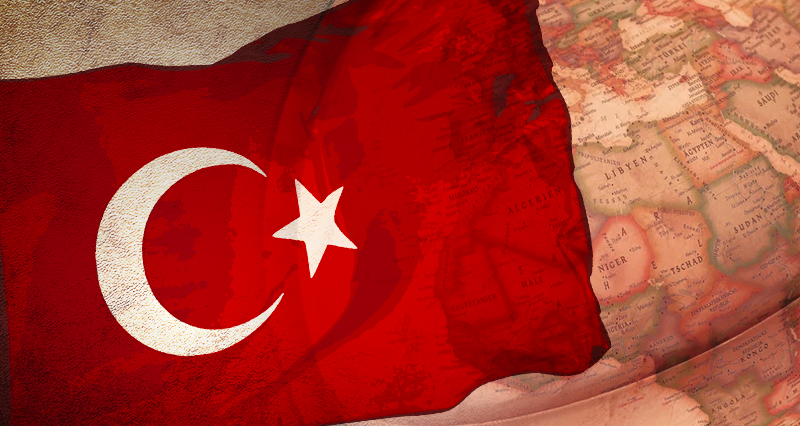
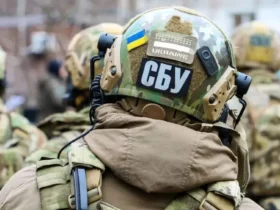
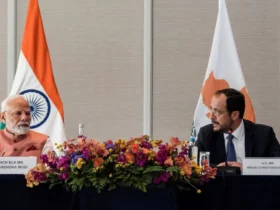
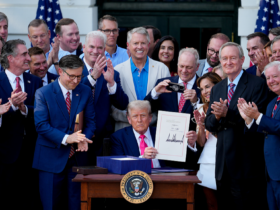
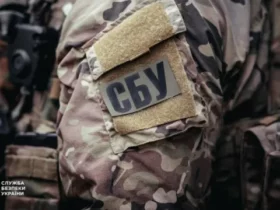



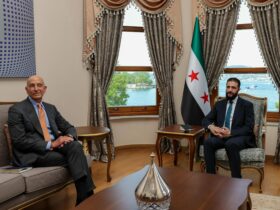

Leave a Reply